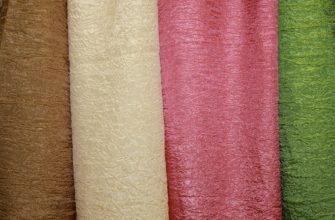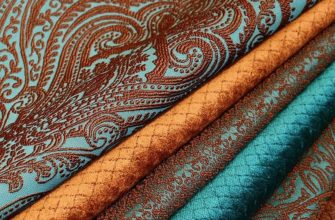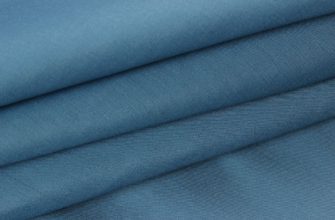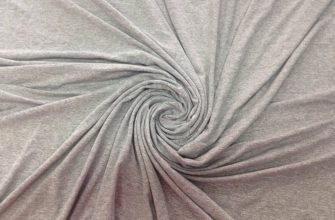Non-woven material obtained by felting natural wool is called felt. A special method of intertwining the fibers is used to create fabrics of different thicknesses.
- History of invention
- Properties and performance characteristics
- Construction view
- Characteristics of thermal felt
- TE - electrical engineering
- Composition of wool for felt depending on the area of application
- Application for sewing clothes
- Selection of technical felt by thickness
- Where to get PVC felt for production
- Care Guide
- Advantages and disadvantages
History of invention
The method of hand felting wool fibers, known for many centuries, was used to make warm bedding, clothing and footwear. Modern technologies make it possible to obtain material in the form of a single piece of fabric. Synthetic components can be added to natural ones. The finished fabric is dyed in a variety of colors and is widely used in various industries.
For your information! In most cases, the composition is sheep wool. Archaeological excavations of ancient ancestral sites indicate the use of dog and horse wool for felting.
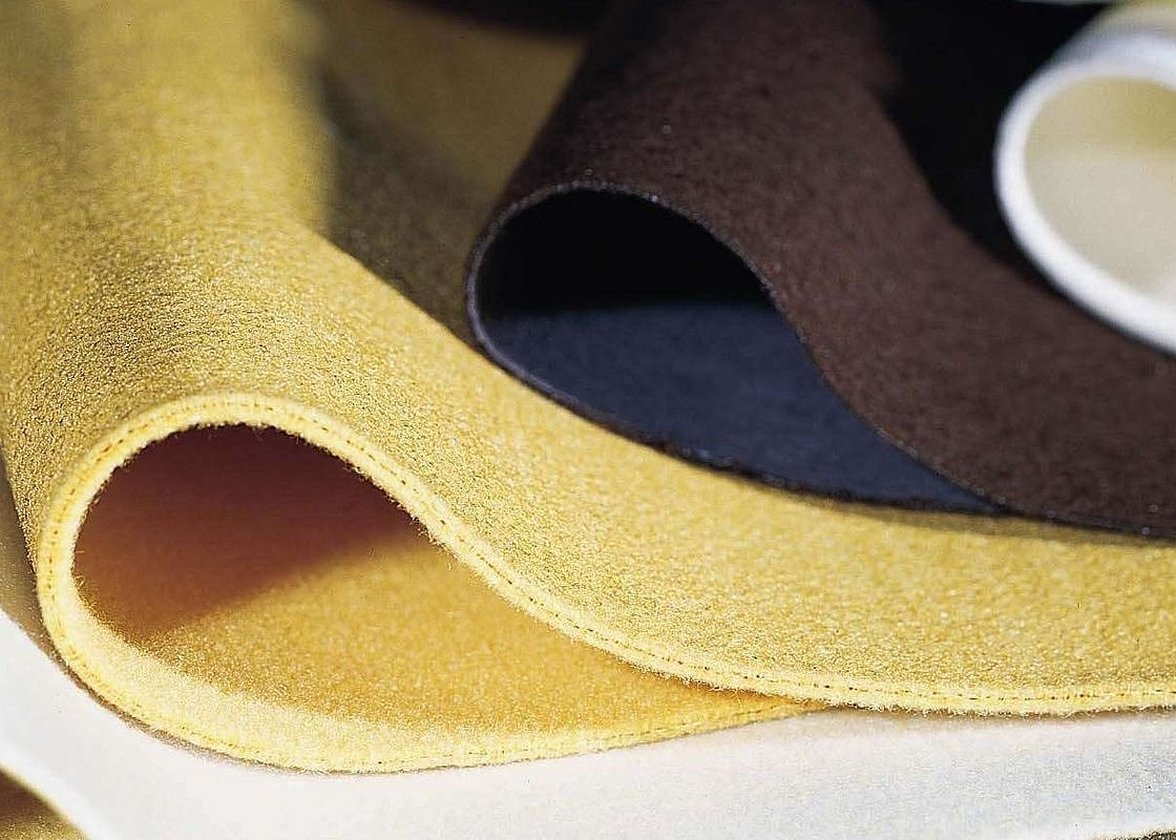
Properties and performance characteristics
The advantages of natural fabric include:
- does not contain harmful and toxic components, neutralizes formaldehyde vapors, is a material with a high degree of environmental friendliness;
- High thermal insulation properties are provided by natural wool. It is used for insulation of floors and walls in residential premises. Tons of this material are purchased for construction purposes;
- absorbs moisture and then releases it through the drying of the fibers. This quality is used in shoe manufacturing and construction;
- the density of the material does not make the product heavier, while maintaining its lightness;
- antibacterial properties have a negative impact on the growth of fungi and microorganisms harmful to health;
- the wear resistance of felt helps to maintain its original characteristics for a long period of use;
- the low cost of finished products is ensured by inexpensive production;
- does not pose a health threat to people suffering from allergies.
Please note! The content of a special scaly layer on individual hairs in sheep wool adds airiness to the material and heat retention under temperature influences. The property of thermal insulation is also inherent in finished felt products.
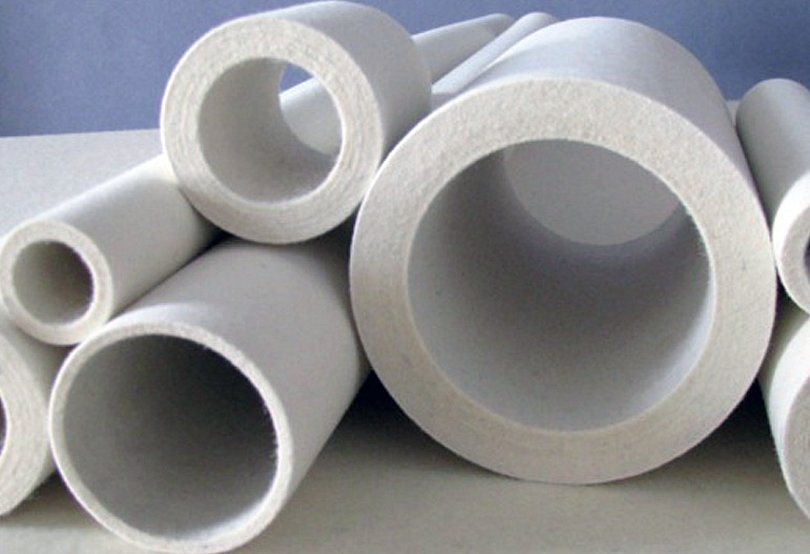
Construction view
In construction, coarse wool felt is used as a heat-insulating material with non-flammable properties. Technical felt is used in the construction of furnaces and the insulation of chimneys, heat generators and pipelines with high temperatures of the transported mixture.
Metallurgy, glass and ceramics widely use the properties of low-grade felt containing waste from the fur industry, flax tow and mixtures of wool from other animals. Glue is used to firmly bond the fibers to obtain a uniform composition and a certain thickness of the fabric.
Construction felt is used according to the technical conditions of production. The felt plate does not burn, but has the property of smoldering for a long time, emitting smoke. In addition:
- low density of the material reduces the load on building structures;
- the elasticity of the fabric increases the ability of the material to fill in uneven terrain;
- ease of installation and cutting of parts simplifies use in construction and installation works;
- The soundproofing properties of felt boards are used in the installation of inter-apartment partitions.
Important! The degree of moisture absorption of the material can be increased by eliminating and using high-quality insulation. To prevent felt from becoming a habitat for moths and other insects, it is enough to treat the fabric with a NaF solution.
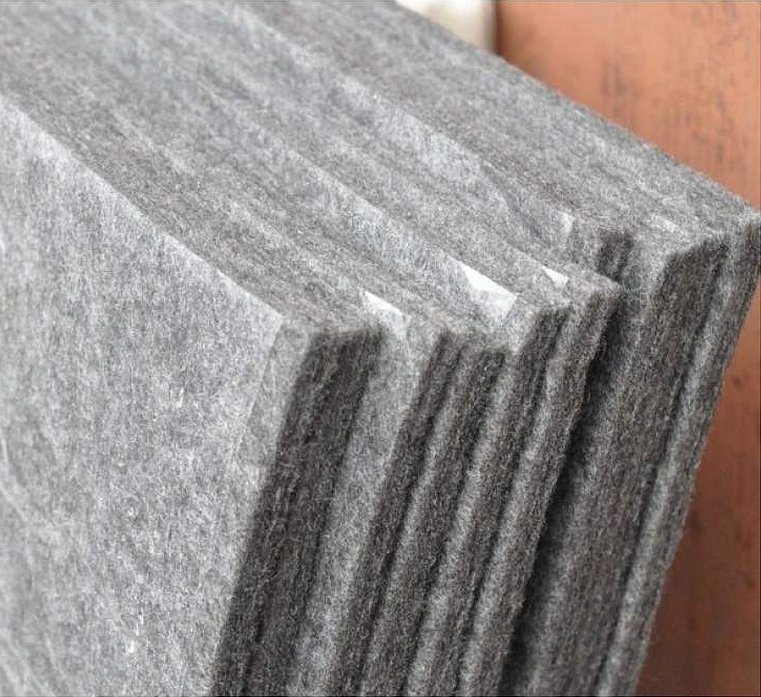
Characteristics of thermal felt
Non-woven material with high thermal insulation properties is used in the production of modern mattresses and orthopedic furniture.
Technical felt has excellent characteristics. Used in the manufacture of modern mattresses, it changes with an increase or decrease in the percentage of synthetic and natural fibers in the composition. The manufacturer often uses polypropylene and acrylic as additives to natural fibers.
- Polypropylene gives the thermal felt strength and resistance to high loads.
- The low thermal conductivity of acrylic enhances the thermal insulation properties of the felt sheet.
- The raw materials can include polyester and polyamide fibers with natural components of wool, cotton, jute and flax.
Heat-resistant sheet felt is produced in sheets about 2 m wide, which allows reducing the amount of waste when cutting parts. The high density of the material reliably isolates the springs from the outer finishing layer in mattresses. The use of one or two layers separates the products according to the winter-summer principle.
The sheet is tested for elongation at possible rupture and at maximum load to understand what weight the web layer can withstand. The material accepts the load distributed over the entire surface of the sheet. Heat-resistant sheet felt is produced from 3 to 10 mm.
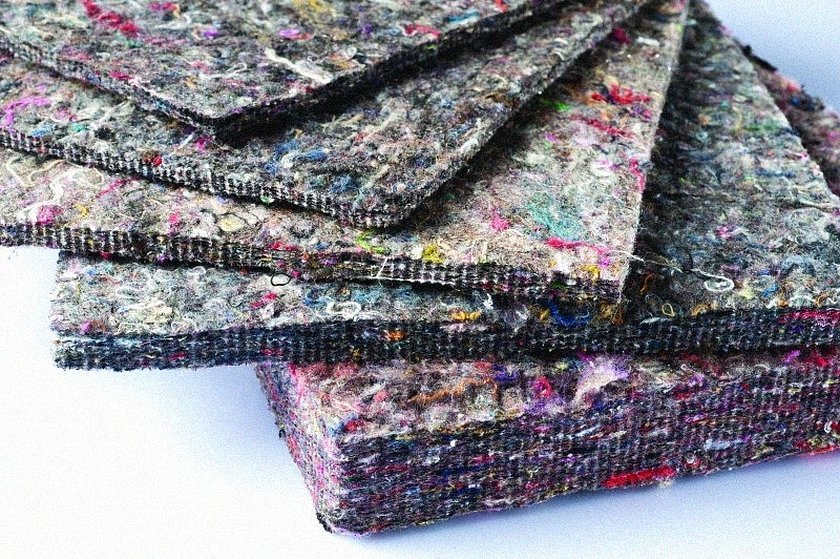
Important! The filling of the orthopedic mattress made of natural and synthetic fibers has high wear resistance and strength to mechanical loads, without losing its hygienic properties. The ability to ventilate and dry quickly, without absorbing odors, is used by the manufacturer in the manufacture of a wide range of furniture.

TE - electrical engineering
The insulation properties of felt are used not only in civil and industrial construction, but also in mechanical engineering in the production of gaskets, seals and filters. The use of technical material is also widespread in other areas of production:
- defense;
- construction;
- petrochemical;
- furniture;
- steel foundry;
- transport;
- textile;
- art.
Reliable protection of metal elements from contamination, abrasion, impact effects and the ability to retain oil for lubricating rubbing parts make technical felt an indispensable material.

The fine-wool type of felt is used to create shoes and household items.
According to types, the material is divided into:
- coarse wool felt up to 11 mm thick for mechanical engineering and the production of soundproofing materials;
- semi-coarse thick felt with a thickness from 9 to 20 mm;
- fine-wool from 2.5 to 10 mm, used in the textile, automotive, furniture and construction industries.
For your information! The brand determines the type of wool, purpose, thickness and the corresponding GOST.
It is known to use glass felt for sound insulation. The felt cloth is placed between two layers of fiberglass, stitched with glass threads.
Composition of wool for felt depending on the area of application
The main raw material for felt is sheep wool with the addition of goat, camel and horse hair. The addition of jute or cotton reduces the cost of the material.
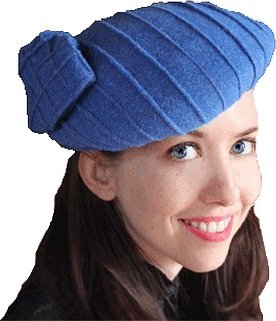
The production process involves:
- loosening wool on plucking and scutching machines;
- mixing until cotton wool is obtained;
- compaction of the base;
- impregnation with sulfuric acid solution;
- felting until the desired density and size is achieved;
- drying with steam in a dryer.
Application for sewing clothes
The material is used to produce the following items:
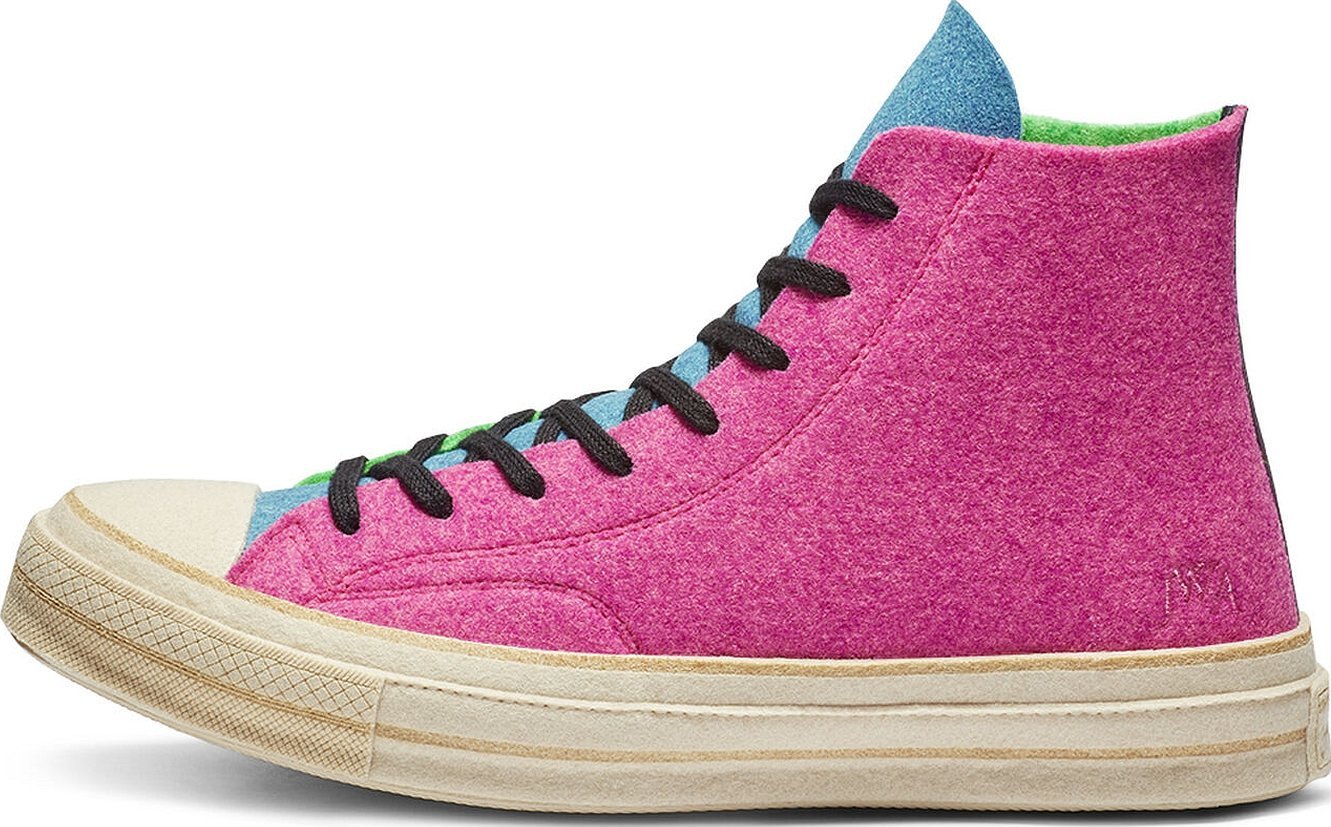
- The metallurgical industry uses hats for metallurgists made of coarse or fine wool felt to protect against high temperatures. Steelworkers' gloves are made of coarse wool felt, which can protect against splashes of hot steel particles;
- special winter footwear with high thermal insulation qualities will protect your feet from moisture and frost;
- Bath accessories are known for their properties of protection against hot steam;
- felt boots and felt boots are produced for enterprises and the population;
- coats and jackets;
- hats for men and women;
- slippers and sneakers, shoe insoles;
- pillows, blankets;
- bags and toys;
- floor mats and linoleum base.
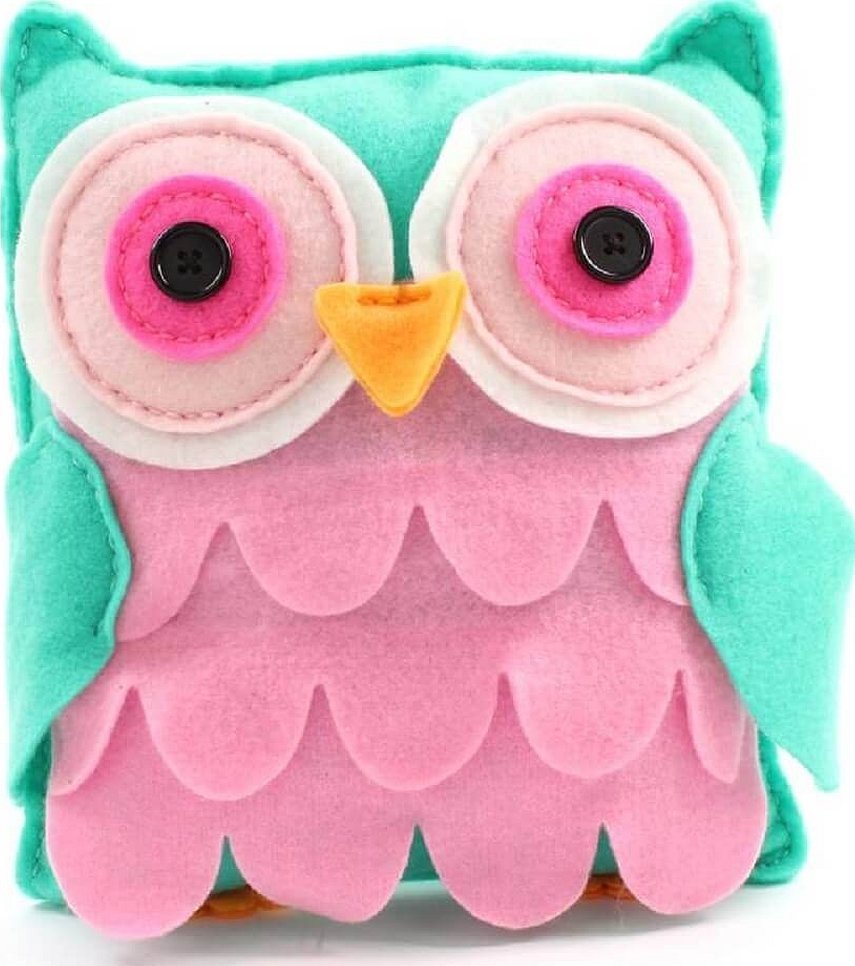
Selection of technical felt by thickness
Wet felting technology is used to produce pure wool technical felt up to 200 m long. The density is 0.15-0.39 g/cm³. The thickness of the fabric is 2-30 mm.
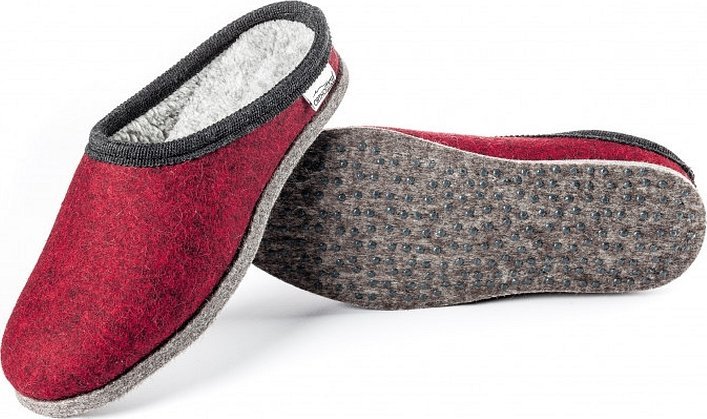
Needle-punched felt is divided into:
- pure wool;
- woolen;
- semi-woolen;
- synthetic.
The density of such fabric is 200-1600 g/m², thickness 1-10 mm.
Technical felt, made from felt, is used in metallurgy.
The thickest coarse-wool technical felt GPrA up to 25 mm is used to make filters, seals and gaskets. It is dark in color with inclusions. The most common use of coarse-wool felt is 20 mm.
The G-I-T brand with a looser structure is used as a soundproofing material and as insulation. Dense felt perfectly absorbs sounds and retains heat.
Semi-coarse wool of dark gray and gray colors is used to protect units and assemblies from vibration and mechanical damage. The thickness of such felt is 10 mm.
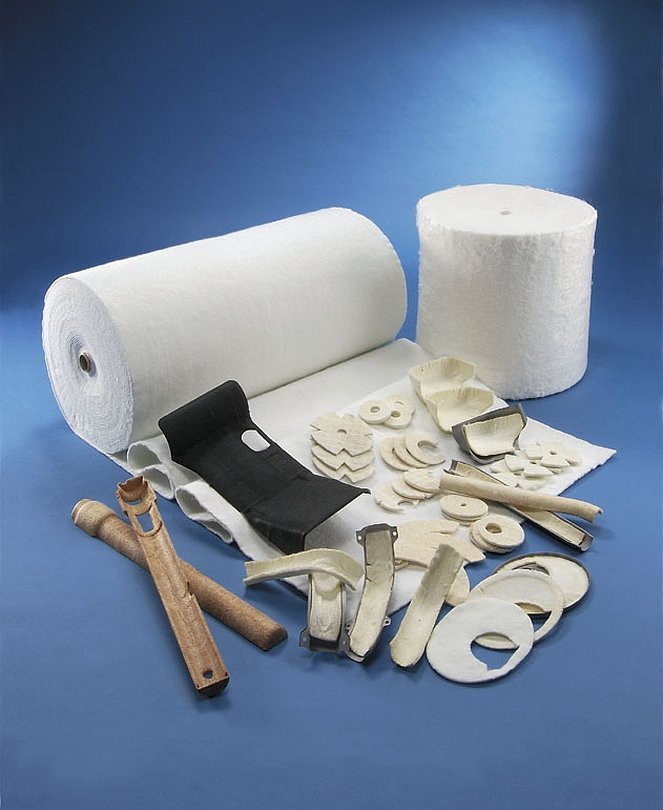
Fine-wool TE is produced in light color and is suitable for microwires and gaskets in electrical appliances.
Needle-punched felt deserves special attention. This is a non-woven felt, the connection of fibers occurs by piercing with needles. It is used for consumer goods: bath accessories and house slippers, rugs and mittens for protection from heat.
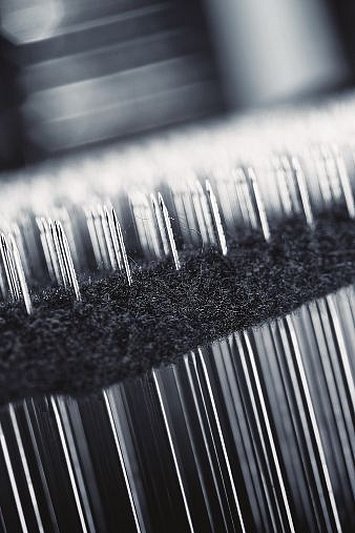
Where to get PVC felt for production
The manufacturer works with both organizations and individuals, so the possibility of wholesale purchases is always indicated. For domestic needs, the manual method of felting wool has always been used. Such material can be purchased from private suppliers and farmers.
Care Guide
When caring for it, you should follow these tips:
- For clothing, hand wash and dry clean are recommended;
- After washing, the product can be wrung out with a dry cloth;
- felt toys can be cleaned with a soft brush and detergents;
- It is recommended to dry the product in natural conditions without a hair dryer and away from heating devices;
- slippers, bags and floor coverings can be vacuumed and cleaned with a clothes brush;
- Storage is recommended in paper bags using moth repellent.
Advantages and disadvantages
The main disadvantages include shrinkage during drying and absorption of large amounts of moisture due to the hygroscopicity of the material. There is also the possibility of moth infestation. But a small number of disadvantages are offset by a host of advantages.

The main advantages of natural material are high heat-protective qualities, fire safety, practicality and durability. Antistatic properties of felt are used for polishing, and air impermeability for insulation of walls and floors in living quarters. And the material not impregnated with chemicals is used in hand-sewn decorative elements.

The wide distribution of felt is familiar and unnoticeable at first glance. It can be found everywhere: from children's toys to heating mains. It is a truly universal material, so when choosing it, you should approach it with all responsibility, so as not to, for example, buy for clothes one that is only suitable in thickness for wall insulation.

